Garage Security
Most burglars are entering homes via garage doors. Burglars are becoming more brazen each day and are undeterred by passive security such as security cameras or motion-triggered outdoor lights. These burglars are now carrying bolt cutters, saws, drills and blow torches to make quick work of bike locks and anything else standing in between them and your belongings.
Reduce / eliminate visibility into your garage
Security footage shows that burglars are peering through windows, mail slots, and door air vents to scope garage contents before breaking in. If they can see items of value (bikes, tools, electronics, etc.) you are more likely to be a target. Employing many of these steps will help reduce your risk:
Cover all clear windows with plywood or sheet metal. At a minimum, block with cardboard, paint, tape or curtains.
Cover your mailslot with a metal privacy hood to prevent peering inside. Fabric mailbags are insufficient as they are easily cut or ripped.
Cover garage door air vents with makeshift hoods or plywood (Warning: do not obstruct vents with plywood if you need to maintain ventilation in your garage for carbon monoxide safety)
Reinforce vents with steel mesh to prevent access.
Keep all valuable belongings (bikes, tools, etc.) out of view from your garage door windows, mail slot and vents.
If you cannot block your air vents, park your car close to your garage door, or place large obstructions (trash bins, etc) to prevent peering into your garage.
Try not leave your garage open for extended periods of time.
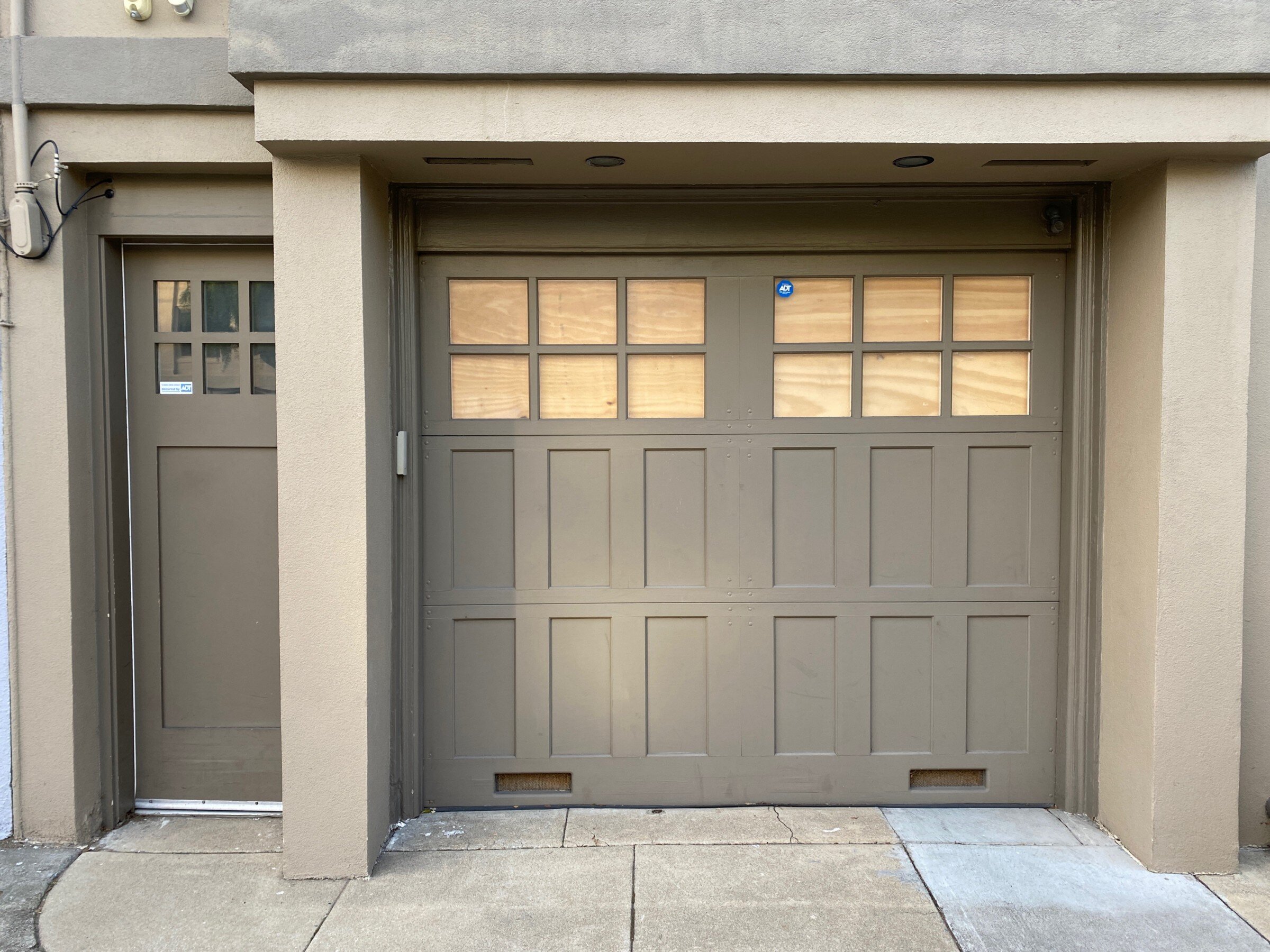

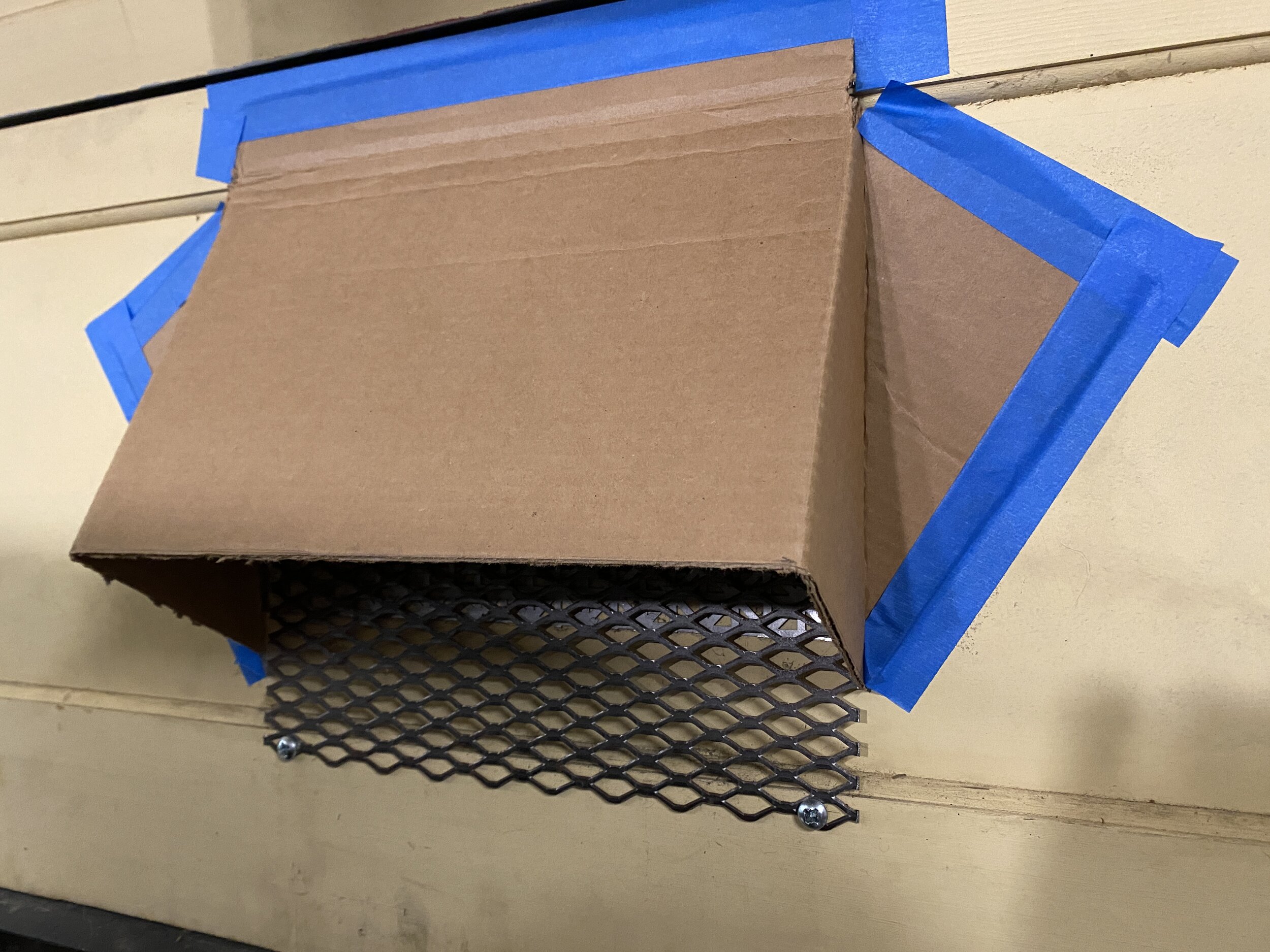

2. Block Entry Access
Triggering the emergency release latch (red rope and handle) with a wire hook inserted through a window, mailslot, or drilled hole is the primary way these burglars are accessing garages. To prevent entry, remove your emergency release cord and secure your emergency release latch (the trigger that detaches your door from the lift motor, allowing it to be opened in an emergency). How to secure your latch:
Several after-market devices can block latch access (see below)
Securing the latch with duct/foil tape is a less effective alternative (and not recommended) as several burglars have defeated this approach
Plastic zip ties are a popular way to secure the latch, but proving no longer sufficient to deter thieves. Local hardware stores are suggesting unbreakable metal zip ties.
Aftermarket “shields” are less effective, but provide some protection.
Most garage door windows are easily broken to access the emergency latch. Consider blocking windows with plywood, steel plates, or unbreakable plexiglass to inhibit access.
Safety note: Disabling your emergency release lever can circumvent an important egress from your home in an emergency. Please consider this when securing your garage.
Images include:
Aftermarket plastic device to secure emergency latch (~ $30) Fits LiftMaster, Craftsman and Chamberlain models with T-rail or I-beam-rails.
Aftermarket metal device to secure emergency latch. (“Garage Protect” ~$40) Fits on most garage door brands and models.
Emergency Triggers secured with duct tape and foil tape (which is commonly defeated by burglars).
Using a ziptie to secure the emergency latch (unbreakable metal ziptie is MUCH more effective than plastic).

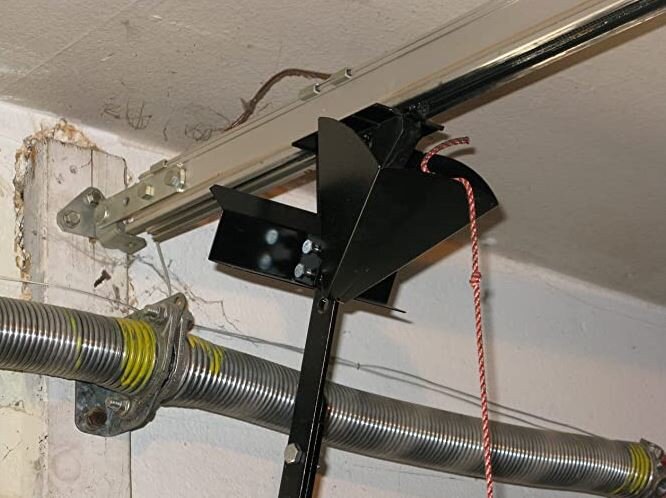
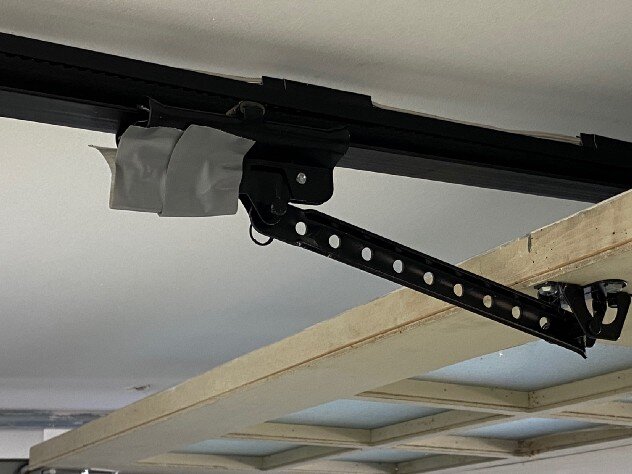


Holes drilled in garage doors to access emergency releases
Burglars will break windows or quickly drill large holes directly into garage doors, then scatter for 10-15 minutes in the event the noise awoke anyone. They will return with a wire/hook to trigger the emergency release.
Holes are usually drilled at the top of garage doors, closest to the emergency release trigger.

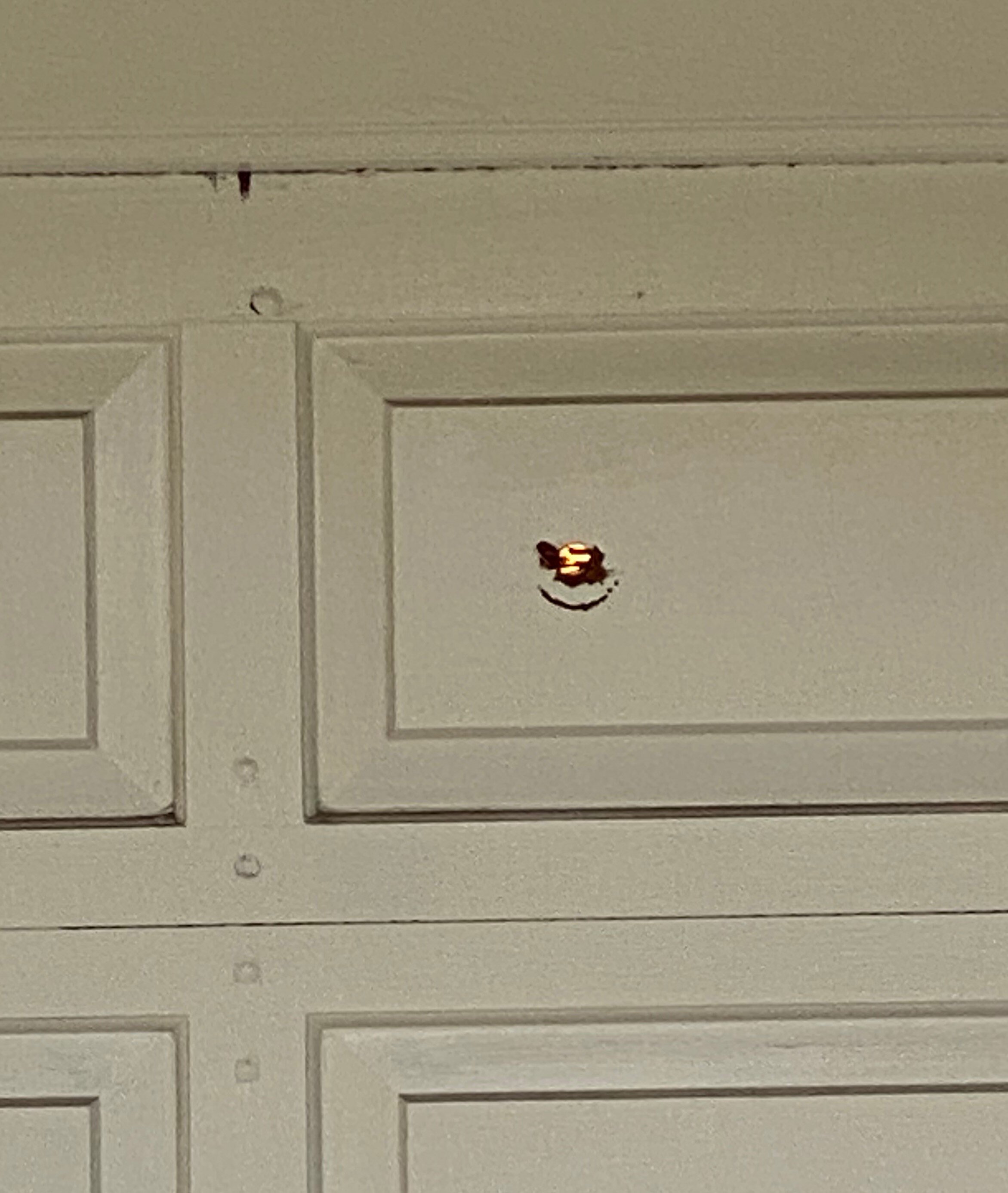

Install and use Deadbolt Locks on your garage doors to prevent it from being opened. Many types of deadbolts are available.
Manual deadbolts will prevent your door from being lifted, even if the emergency release is triggered. Simple, manual solutions include a screwdriver, vice grips, or a padlock manually placed through the track to prevent the garage door’s wheels from moving up the track. Or, simple manually operated garage door deadbolts are available for ~$10 (can be secured with padlocks). However, all manual deadbolts must be manually removed prior to opening a garage door, else you risk damaging the motor (as several neighbors can attest).
Automatic deadbolts are a much better option and cost about $100 for aftermarket (www.garage-lock.com) or fully-integrated deadbolts (Liftmaster.com). However, fully-integrated deadbolts require the latest model of garage door motor (generally upwards of $1,000) All trusted local garage door companies know how to install these solutions.
Tradesman doors
The ‘people doors’ next to garage doors in many Richmond district homes, frequently used for trash bins, etc. are also a frequently breached point-of-entry for burglars.
Most have easy-to-break windows, and are locked only with a thumb latch or doorknob lock.
Windows on these doors should be sealed with plywood, and doors should be locked with upgraded hardware such as key deadbolts, flip-locks (only a few $) door reinforcement locks, or other aftermarket locks and katy bars.

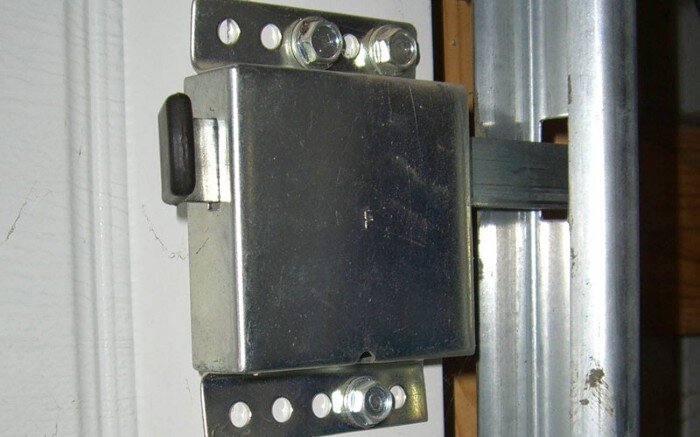


Alarms
Security Alarms can also be helpful, but as most burglaries happen in a matter of moments, they need to be loud and disorienting immediately upon a breach.
Motion sensors and door-tripped alarms are most effective, but, of course, there is always some incidence of false alarms (especially with pets or kids).
Very simple, inexpensive but LOUD alarms are available for just $30-$50 on Amazon. One placed in your garage could have the desired effect of scaring burglars away, or at least waking you in the wee hours at 3AM when most of these burglaries have been occurring. Ensure your garage door is armed with an alarm that sufficiently loud to wake you up, can’t be quickly deactivated by burglars, and it activated when the garage door is breached or is motion activated.
Bike and equipment locks
Lock you bikes and other expensive gear with very heavy, thick steel locks.
Most burglars carry heavy-duty bolt cutters which can easily cut through most standard bike locks.
Remember that bikes and tools need to be locked TO something that is equally difficult to cut or break as the lock (a water heater, steel shelf, or a support beam of your house). Locking bikes and equipment to one another is generally insufficient.


Video Surveillance cameras such as Nest, Ring etc. are also a good idea.
However Richmond district burglars are currently not being deterred at all by cameras.
While cameras will not deter, they are helpful to SFPD burglary detectives with identifying perpetrators, and connecting cases. Footage is also helpful to alert & shock neighbors to raise awareness of burglary and methods. Footage will be used to convict these burglars, and all footage should be shared with SFPD.
Motion sensor security lights are a good idea in general.
However Richmond district burglars are currently not being deterred at all by lights.
Solar LED lights are inexpensive and easy to install anywhere (just remember that they need sunlight!)
Hardwired motion lights are much more powerful.
Other tips
Push on the top panel of your garage door. Does it move and leave a small gap at the top of your door? If so, you are very vulnerable. This opening is where burglars can easily insert a long wire hook and trigger your emergency release latch.
If you park in your garage regularly park your car as close to the garage door as possible, to prevent/block visibility into your garage through vents, mail slots, and windows. This also makes entry and exit more difficult.
Move your garage door button away from the garage door itself. Buttons mounted on the wall next to the door itself are easy pickings for burglars.
If possible, store bikes or other high-value goods out of direct line-of-sight from your garage door. If items can be seen, you are more at risk.
Keep your garage closed when you are not entering or exiting. Burglars have reportedly been driving around SF neighborhoods with videos rolling to spot garages with bikes or other high-value goods.
Get to know your neighbors, look out for one another, and perhaps share some of these tips. A little connective tissue between neighbors can go a long way.
Many/most of these tips are echoed by SF SAFE and the SFPD (click here to view)
